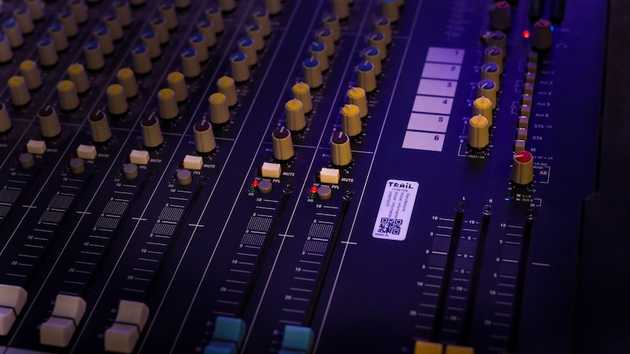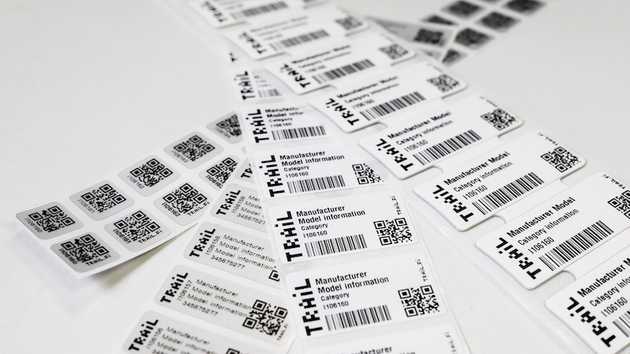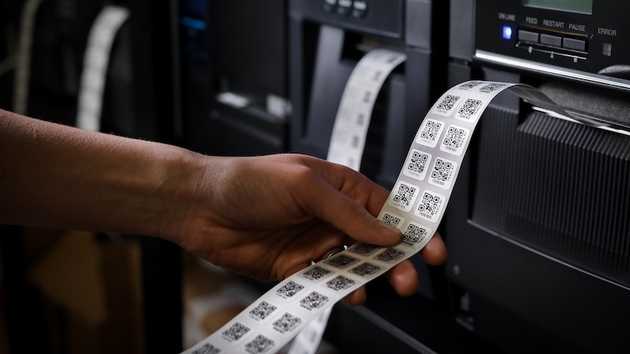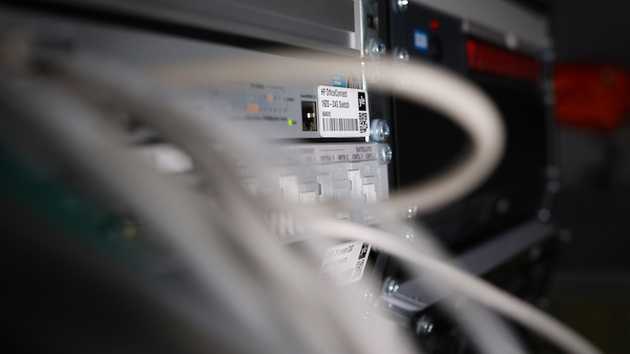What is equipment management – 6 principles of life cycle management
Equipment management is a continuous process in optimizing the life cycle of company’s fixed assets. This article will describe in more detail the core elements of equipment management and how to apply those in any organization.
Equipment management is not a tool only for specific industries or company sizes. A ground rule can be set so that if you struggle to list all fixed assets of your company, completed maintenances or the time of acquiring the equipment, it’s worth considering digital equipment management. As an outcome for the investment, you can expect cost savings and a more responsible asset management culture.
Read more about the best practices of equipment management.
Table of contents
- Why is it important to manage the life cycle of equipment?
- Different alternative equipment management methods
- What is the difference between equipment management and fixed asset accounting?
- Implementing and using equipment management system
- Asset tracking and labeling
- Inventory of fixed assets
- Summary
Why is it important to manage the life cycle of equipment?
Imagine the following situation: it’s spring and you have purchased a new bicycle. You enjoy riding the bike throughout the summer. You leave the bike outside for a Nordic winter and when it’s time to ride again, the condition of the bike is not the best anymore and maintaining it back to it’s prime comes with a price.
If on the other hand you had paid attention to the life cycle of the bike from the very beginning, you would have taken the bike indoors for winter and ensured that way the condition for the next summers to come. By prioritizing equipment life cycle, you ensure that the productivity of the asset investment is optimized.
Same principle applies also to the equipment of any company or organization. When equipment use is enriched with life cycle management, the benefits are:
- The return on investment (ROI) is optimized
- There is a reduced need for replacing equipment
- The equipment waste is reduced
- The life cycle of equipment is longer
- The maintenance costs of the equipment are managed
- Defining and managing the insurance value of equipment becomes easier
- Ability to operate according to sustainable values in all equipment purchases
On top of productivity improvement, the life cycle management of equipment also contains managing the equipment after it’s lifetime. When equipment is no longer needed in my organization, could it be sold to aftermarket? How the equipment should be recycled? These topics are right in the core of sustainability and resource-wise operations and are key in improving the sustainability of any organization.
Companies naturally carry also other equipment besides bikes. Therefore requirements for equipment management are also higher. The first step is to identify and list all owned equipment.
Different alternative equipment management methods
Fixed asset management is important. It creates confidence in knowing what equipment is owned by an organization, how the productivity can be optimized, and in general supports taking bigger responsibility for the operations.
Equipment management can be managed in several different manners. And as in life in general, not all methods suit all. Here are the most common ways to manage fixed assets:
- The memory of employees
- Pen & paper
- Excel or similar spreadsheet
- Maintenance management system
- Equipment management system
- ERP
Yes, you guessed it right, the first two are the most common ones. And those are perfectly good options for a newly started company when there isn’t yet much to manage. The few laptops and the one van can be easily remembered.
In a growing company it’s noticeable that a system based on memory or pieces of paper is not reliable or secure. There is a risk of people leaving taking the knowledge of equipment with them.
Spreadsheets are already a more advanced solution compared to pen & paper. The most skilled users can work with spreadsheets in managing maintenances and reservations. In small companies this can well be a reasonable solution.
The problem with spreadsheets is that they are fixed and there is a risk for conflicting duplicates. The user interface in spreadsheets is not the most intuitive and also due to that there is a risk of missing updates.
Maintenance systems are often used by companies where the useability and usage condition are of importance. Maintenance systems are built to manage maintenance requests and maintenance plans efficiently. Maintenance systems however lack other core features of equipment management such as inventories, investment planning or equipment reservations.
Equipment management system is a digital tool for equipment life cycle management. On top of maintenance features, equipment management system includes all required functionalities to maximize the productivity of equipment. These features are asset register, asset labelling, management of asset reservations and lendings, inventory management and asset investment planning.
A proper equipment management systems ensures that the asset information is transparent and available to all who need it. We’ll return to the subject of equipment management system later in this article.
Enterprise resource planning system (ERP) is in use in many of the more mature companies. ERP many times includes some asset management features, such as asset maintenance, asset reservations, inventories etc. The downside of ERP in asset management is that the functionalities can often be used by only a small number of people and can be very complex to use. License fees for ERP are also substantial and all changes to the service are expensive.
In many cases, equipment management system is used on top of ERP due to better useability. Equipment operations and life cycle management can be operated more fluently through an equipment management system. In these setups, it’s best to ensure open API interfaces on both ends to enable fluent integration.
What is the difference between equipment management and fixed asset accounting?
The finance department usually has the best view to the fixed assets of an organization. And here we need to take a very wide perspective to “best view”. If other departments in the organization have only good guesses (or even those), finance at least has fixed asset accounting and reports to turn to. Now however, it’s time to disappoint all fans of fixed asset accounting. Fixed asset accounting is not enough and for obvious reasons.
Why isn’t fixed asset accounting enough? The most important reason is that it’s not timely enough to give proper and reliable view of the status of fixed assets in an organization. Another important reason is that the information is not transparent – it’s usually available only to the finance personnel.
Fixed asset accounting usually gives answer to the question of what has been purchased and which equipment still has value in the balance sheet. This has actually very little to do with the equipment that is being actively used in an organization.
Fixed asset accounting doesn’t tell for example which equipment has been lost or broken. The information can be obtained only by completing an inventory which is normally rather time consuming unless smart asset tags are used. Traditional inventory reveals only what assets are found, not what is lost and why.
In addition, many devices (for example in the area of AV equipment) the technical lifetime is multiple compared to the depreciation period for accounting. By relying on only fixed asset accounting, this information is not recognized. And it would only be smart to plan future purchases based on the end of actual lifetime rather than the one in the books.
Fixed asset accounting is of course needed, even determined by law. However alone it’s providing a narrow view of assets. Efficient equipment management processes help companies to maximize the lifetime and productivity of the equipment.
Withoud diving any deeper into the additional differences, we'll conclude with a list of the most significant differences between fixed asset accounting and equipment management:
- Fixed asset accounting tells what assets have been purchased and what assets are being depreciated. Equipment management gives a comprehensive and timely view of all owned and operated equipment.
- Fixed asset accounting information is available to only a limited number of people in the organization. Equipment management information is available to all who need it and operate with the assets.
- Fixed asset accounting doesn’t help in managing maintenances, reservations, investments or transfers between physical locations.
- Fixed asset accounting usually includes financial limits for the assets that are being tracked (for example €2000 or €10000) in which case the less expensive assets are not necessarily tracked at all. Equipment management reaches all equipment relevant for the company either via operations or via value.
- Fixed assets accounting doesn’t include information about lost equipment, the reason or timing for getting lost. Equipment management system can log all this information.
Implementing and using equipment management system
Equipment management without a digital system is painful. But how to start with a digital equipment management tool? Simplified steps of implementation are:
- Choosing equipment management system
- Naming a responsible person and first key users
- Choosing the labelling technology (RFID, NFC, QR-code or a combination)
- Gathering information through inventory of assets
- Labeling equipment
- Continuous use of equipment management system
First step is of course choosing the correct equipment management system. A good practice is to list all the challenges, needs, wishes to find just the best system for you.
The software should be tested before making decisions. With testing it’s good to evaluate the internal processes and culture around asset management.
Already when purchasing the system it’s good to name one or two superusers. Their responsibility is managing the equipment as well as acting as key users for the system.
When implementing the chosen system, it’s recommended to name a few key users on top of the superusers. The responsibility of key users is then to implement the processes in their departments.
The best labelling technology and material is chosen before implementing the software. The most common technologies are QR-code, barcode, RFID and NFC, or a combination of these. The practical difference between technologies is in the way they are scanned when using.
It’s always possible to expand the use of different labels later if and when the use of the system expands. In the first phase the fist labelling method is chosen carefully during implementation. We’ll go through the different labeling possibilities later.
The initial inventory is the most time consuming but at the same time the most important step of implementing equipment management system. In practice the work is to list the equipment with all details to be imported into the digital system.
The data quality of the first initial inventory during the implementation cannot be stressed enough. This is something where it’s worth to ask from professionals and take the time to understand the importance of different data elements in the system. If the inventory of all assets seems too big of a hurdle, it’s fine to start with on department, building or location to get going.
When initial inventory is completed carefully, it’s much easier to maintain the data later on.
When initial inventory of assets is completed, and asset data is in the equipment management system, it's time to label equipment with chosen tags. The more advanced equipment management systems offer possibility for own printing infrastructure to bring fluency into the printing process. Labeling is something that requires working hours to be completed.
When equipment management system is in place and assets are labeled, it’s time to move on to the normal continuous use of the system. Now the personnel can manage equipment life cycle efficiently, sustainably and easily. At the same time there is data gathered for decision makers about assets and required investments for planning all asset operations.
Asset tracking and labeling
Tracking assets is a continuous process to keep up record about asset life cycle and location. Many of us have at work or at home searched for a missing piece of equipment and gotten frustrated when not finding it. How fantastic would it be to get the timely information from one reliable source!
Equipment tracking can be broken down to two categories:
- Passive tracking (RFID, NFC, QR-code and barcode)
- Active tracking (GPS)
The passive tracking of equipment is a cost effective method to label and manage equipment. Passive identification lables (RFID, NFC, QR and barcode) link the physical asset with the digital counterpart in the asset management system.
The passive labels do not require a power source to work and therefore have a long life time and are a cost efficient solution in tracking.
Passive tracking doesn’t automatically update the location of the tracked asset. Equipment management system however contains information about the original location of a device which can be verified with inventory. In addition, the reservations feature helps to track the movements of any asset used in projects or given out to personnel (or students or similar groups) for use. With operating through reservations, there is constant knowledge of the location of the assets available.
Read more about identifier lables for assets.
UHF (Ultra High Frequency) RFID labels require a separate reader device to operate. With a special reader, the UHF RFID labels can be identified from a distance up to 10 meters. That is the reason UHF RFID labels are excellent for inventories. It’s recommended however to ensure that the RFID labels contain also printed mobile readable QR- or barcode to ensure readability via mobile device as well.
NFC, barcode and QR code labels are readable with a mobile device without separate reader devices. These labels support the users to access the asset information and operate assets also on the field, when laptops are not close by.
Active GPS tracking is at the moment still a fairly expesive method for asset tracking. That’s why it’s recommended to leave the more expensive technology for tracking the more valuable assets, such as vehicles on the move. The reason the technology is expensive to use is the price of the tracking devices (from tens to hundreds of euros) and data connection needed for each tracking device. The price of data is normally a few euros a month per each GPS tracking device.
GPS tracking devices require power source to operate. This means that the devices require charging which alone creates an additional operation to add to regular routines.
Inventory of fixed assets
Inventory – we can’t live with it nor without it. It’s usually a timely job but highly important from the financial and sustainable aspect of company operations.
Inventories must be recorded for the annual reporting but the inventory of existing fixed assets (machinery, devices, vehicles etc) must not be forgotten. The up-to-date view on fixed assets help to plan investments better and avoid unnecessary acquisitions. In addition the timely data makes it possible to determine accurate insurance values for the assets.
Inventory of fixed assets is often neglected because it takes so much time. The few days around Christmas are often not enough to complete an inventory. In addition a big portion of the fixed asset might be hanging in the ceiling of an auditorium which makes it very difficult to complete the inventory in practice.
What if we say that it is possible to speed up the inventories of fixed assets by 70%? We already touched the subject of UHF RFID labels. The labels are readable from a distance without the visual contact to the actual label. This enables scanning labels of several devices very fluently without the need to find the actual label from each device separately.
Distant readability enables inventories to be managed just by walking through spaces with a reader device. Mobile device attached to the reader with equipment management system in it, make sure that the log is updated during the inventory.
RFID inventories are already here to stay and have opened the possibility for fluent, fast and reliable inventories.
Summary
What is equipment management? It means improved ability to manage and optimize the life cycle of assets all the way from the investment planning to recycling after usage. By managing equipment and brining life cycle management as part of the upkeep of assets, it’s possible to improve the productivity of assets and act more sustainably. Today a responsible company doesn’t purchase disposable product to be used once but ensures that the equipment lasts for long and is recycled after it’s usage with the current owner.
Equipment management doesn’t mean simply that labels are attached in equipment but it means that equipment is maintained through the labels, reservations are managed through the labels and investments are planned based on the gathered data and inventories completed in time. In addition it means a positive change often in the asset management culture as there needs to be responsibility taken for the assets in a different manner.
Equipment life cycle management saves resources. It means monetary savings and more efficient use of natural resources. In a nutshell everyone wins with equipment management.




